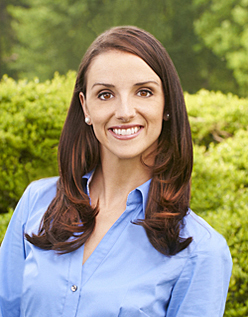
Most of us grew up playing some type of sport and dreaming of becoming a collegiate or professional athlete. For me, it was a focus on dance and striving to be a professional ballerina. At some point we realized that in order to make this dream a reality, we’d have to ‘up the ante.’ We needed to challenge ourselves with better teams, programs, peers or competitors. Some kids hire personal coaches or trainers. Others increase their hours of practice or participate in multiple sports. Many attend summer intensive camps, as I did with the various ballet companies. Most immerse themselves in media and content consumption for their chosen passion. All of these strategies increase the rigor and the rate of improvement for children and teens chasing their dreams. I always said that I would rather be the worst dancer in the most advanced class, than the best dancer in an intermediate class. I would likewise rather be chosen for the last spot on the varsity team, than be the captain of the JV team. I inherently understood as a child that while this would present a physical and emotional challenge, the positive peer effect would have the most rapid and positive impact on my development.
What if the same things occurred in academics? Students identify a career goal at a young age, immerse themselves in challenging coursework, content consumption, increased hours of practice, and positive peer effects. Teachers can also increase rigor by moving beyond worksheets and assessments that test a student’s ability to remember and understand concepts. Many teachers I had the honor to work with pushed students with activities designed to apply, synthesize, analyze, create and produce artifacts that demonstrate higher-order learning attainment. Increased rigor in all classrooms will drastically improve the levels of college and career readiness of our graduates and immerging workforce. The problem is, unless a teacher or parent helps to identify and encourage this rigor, it is unlikely to happen independently. Children lack the knowledge and foresight to identify the steps needed in middle school to prepare them for a future career in engineering, medicine, law, business, arts, or other interest areas.
SAS is helping to change this trend for our state and district partners using SAS EVAAS for K-12 individual student projections to more appropriately place 8th graders in Algebra I. Research has shown Algebra I to be a gateway course to upper-level math success, surfacing opportunities for students to use their four high school years to take Algebra II, Calculus, Trigonometry, Statistics, etc. These classes are necessary to be competitive when applying to universities and to be successful in STEM (science, technology, engineering, and math) majors and careers.
SAS facilitated a presentation from Wake Forest Rolesville Middle School (WFRMS) at the ICLE Model Schools Conference in June. In their presentation, Principal Elaine Hanzer and Assistant Principal Patches Jacobs told the compelling turnaround story of their Wake County, NC, school. Middle School Algebra I has historically been offered to the elite achievers, gifted, and honors students. It was surprising to the WFRMS teachers when EVAAS projection reports identified 100 students who had an 80-100% chance of scoring proficient on the 8th grade Algebra I state assessment. Wake Forest Rolesville teachers had not recommended these students for the advanced course for a variety of reasons: they lacked the study and organizational skills, slept in class, acted disruptively, had poor attendance, etc. EVAAS student projections indicated a need to triple the number of students enrolled in Algebra from two course sections to six. Administrators also used EVAAS value-added reports to ensure the most highly effective Algebra I teachers were placed with these students who clearly needed additional support to be successful. The result?
Every one of these students passed the state exam with a Level 3 or 4 proficiency (out of 4).
Visionary leadership, systematic implementation, and stakeholder communication were critical to this project’s success. Wake County has since scaled this strategy up to use EVAAS projections as the de facto indicator of whether a 7th grader should be afforded the opportunity to take Algebra I in the 8th grade. WFRMS’s relentless dedication to rigorous academic opportunities created a culture shift that raised expectations for students based on accurate and unbiased EVAAS data. The school’s theme was “Expect to Win!” and Assistant Principal Jacobs summed up their work by saying, “There are a thousand reasons to doubt, but one student’s opportunity for a better life rests upon us having hope.”
When teachers show students and parents their individual projection reports, it empowers and excites them to ‘up the ante’ in the classroom, and not just on the ball field or stage. Because we once had genuine fun and love for our sports, we appreciated and sought out rigor with relentless pursuance. It is my hope that school leaders nationwide will now follow the example set by WFRMS and NC to pursue this same relentless rigor in course placement to advance all students who deserve the potentially life changing opportunity.

2 Comments
Pingback: Part 2 of the 3 R’s of Education: Real World Relevance - State and Local Connection
Pingback: Part 3 of the 3 R’s of Education: Relationships that Raise Learning - State and Local Connection